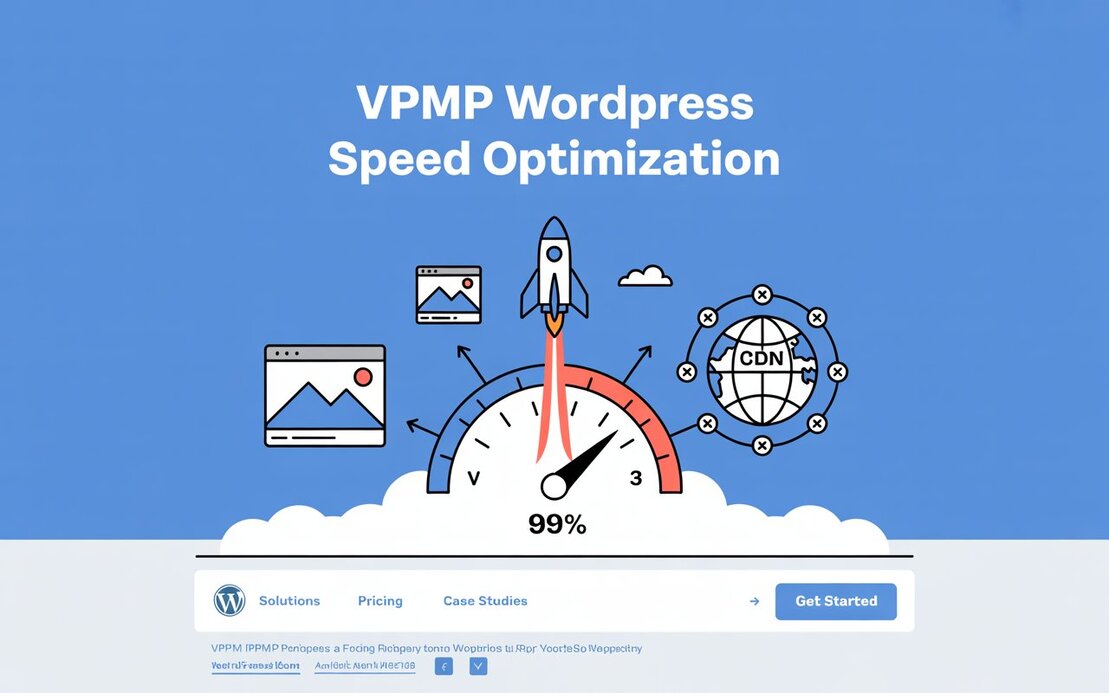Introduction
A slow website can ruin user experience, increase bounce rates, and hurt search engine rankings. If you are running your site on VPMP WordPress, speed optimization should be your top priority. A delay of even one second in page load time can drastically impact conversions and engagement. The good news is that optimizing VPMP WordPress for speed is easier than you might think.
In this article, we’ll explore why speed matters, the main causes of slow load times, and actionable strategies to instantly boost the performance of your VPMP WordPress site.
Why VPMP WordPress Speed Optimization Matters
Optimizing your VPMP WordPress website is not just about making it faster—it directly influences:
SEO Rankings: Google considers site speed as a ranking factor.
User Experience: Faster load times improve navigation and reduce frustration.
Conversions & Sales: Studies show that faster websites have higher conversion rates.
Mobile Performance: With more users browsing on mobile, speed is essential.
In short, VPMP WordPress speed optimization is a business-critical task, not just a technical upgrade.
Common Causes of Slow VPMP WordPress Websites
Before fixing speed issues, it’s important to understand what slows your site down. Some common reasons include:
Heavy Themes and Plugins – Bloated themes and unnecessary plugins add bulk.
Unoptimized Images – Large, uncompressed images increase load times.
Poor Hosting Services – Shared or low-quality hosting affects performance.
Excessive HTTP Requests – Multiple scripts and stylesheets slow loading.
No Caching System – Without caching, every page reloads from scratch.
Too Many Redirects – Unnecessary redirects delay page delivery.
Identifying these issues is the first step to speeding up your VPMP WordPress site.
Step-by-Step Guide to VPMP WordPress Speed Optimization
1. Choose Reliable Hosting for VPMP WordPress
Your hosting provider plays a vital role in website performance. Opt for managed WordPress hosting or VPS solutions designed for speed. Providers that use SSD storage, CDN integration, and caching support are ideal for VPMP WordPress websites.
2. Optimize Your VPMP WordPress Theme
A lightweight, clean-coded theme makes a huge difference. Avoid themes with excessive built-in features you don’t use. Popular lightweight themes such as Astra or GeneratePress integrate well with VPMP WordPress and help achieve faster load times.
3. Use a Caching Plugin
Caching reduces the time it takes to load a webpage by storing static versions of your site. Plugins like WP Rocket, W3 Total Cache, or LiteSpeed Cache are excellent options for VPMP WordPress speed optimization.
4. Compress and Optimize Images
Images are often the biggest contributors to slow websites. Use tools like Smush, ShortPixel, or Imagify to compress images without sacrificing quality. For VPMP WordPress, always use WebP format for smaller file sizes and better performance.
5. Minify CSS, HTML, and JavaScript
Unnecessary code slows down your website. Minification removes extra spaces, comments, and line breaks. Plugins like Autoptimize can automatically minify your files and improve VPMP WordPress site speed.
6. Implement a Content Delivery Network (CDN)
A CDN stores cached versions of your site on global servers. When users access your VPMP WordPress site, they get content from the nearest server, drastically reducing latency. Popular CDNs include Cloudflare, BunnyCDN, and StackPath.
7. Remove Unused Plugins and Scripts
Every plugin adds load to your server. Audit your VPMP WordPress plugins and remove the ones you don’t need. Similarly, disable unnecessary scripts and tracking codes that increase load times.
8. Enable Lazy Loading
Lazy loading ensures that images and videos load only when the user scrolls to them. This reduces initial page load time. WordPress has built-in lazy loading, but you can enhance it with plugins for VPMP WordPress optimization.
9. Optimize Your Database
Over time, your WordPress database gets cluttered with old revisions, drafts, and spam comments. Use plugins like WP-Optimize to clean up your VPMP WordPress database and boost performance.
10. Regularly Test and Monitor Speed
Tools like Google PageSpeed Insights, GTmetrix, and Pingdom help track your site’s speed. Regular monitoring ensures your VPMP WordPress speed optimization efforts remain effective.
Advanced Tips for VPMP WordPress Speed Optimization
Use HTTP/2 Protocol: Modern hosting supports faster requests.
Host Fonts Locally: Reduce external requests by hosting Google Fonts locally.
Implement Browser Caching: Store frequently accessed data in the browser.
Upgrade PHP Version: Running the latest PHP version enhances VPMP WordPress performance.
Final Thoughts
Speed is not optional—it’s essential. By implementing the strategies above, you can instantly fix slow load times and deliver a seamless user experience on your VPMP WordPress website. From choosing the right hosting provider to optimizing images, enabling caching, and using a CDN, every step contributes to making your site faster and more reliable.
If you want your website to rank higher, convert better, and keep users engaged, VPMP WordPress speed optimization should be at the top of your priority list.



